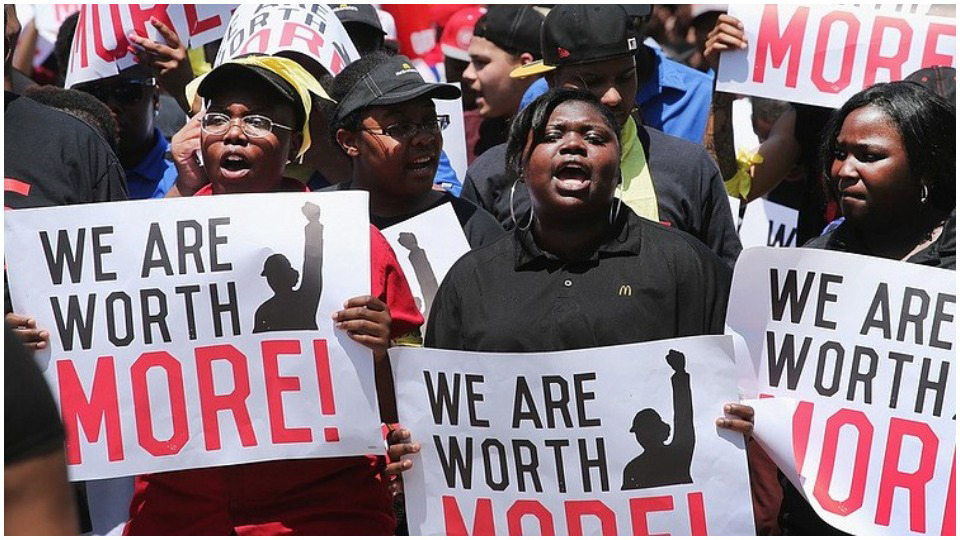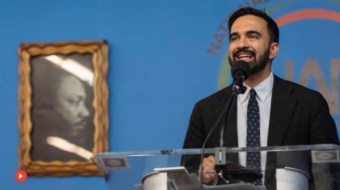
Today, April 10, women across the country are marking “Equal Pay Day,” the symbolic day when women’s average earnings finally “catch up” to men’s earnings from the previous year. The event was first observed in 1996 by the National Committee on Pay Equity, a coalition of women’s and civil rights organizations, labor unions, professional associations, and individuals working to eliminate sex- and race-based wage discrimination and to achieve pay equity. The national day of acknowledgement is held on a Tuesday as a way to represent how far into the next work week women must work to earn what men earned the previous week.
The gender pay gap is defined as the average difference between men’s and women’s aggregate hourly earnings. Despite the widely reported statistic that women make 80 cents to every man’s dollar, however, research delving into the complexities of race and geographic location has found the pay gap for women of color to be even wider. According to a report from the American Association of University Women (AAUW), a national research-based grassroots organization, the pay gap is wider for African-American, Native American, and Latina women, as well as for mothers, all of whom have to work even longer into the year for their wages to catch up.
Black women are among those who suffer the steepest wage gap in the country. They often are significantly underrepresented in leadership roles, whether in government or private industry. Although the number of black women in higher-paying professional occupations has increased over time, they are still more likely to work in service occupations than white, non-Hispanic women according to the Bureau of Labor Statistics. On average, black women are paid 63 percent of what white men are.
Native women struggle with similar professional barriers; it is reported that they have to work nine extra months to make the same salary as white men make, so their Equal Pay Day for 2017 won’t roll around until September 2018. According to AAUW, this issue is widely attributed to the fact that Native people face “disproportionate rates of unemployment, poverty, and violence as well as limited access to education, and women tend to bear the brunt of discrimination.” It is also seemingly difficult to collect more efficient data on indigenous communities because they are a notoriously understudied group with relatively small populations.
Latinas in the United States are typically paid just 54 cents for every dollar paid to white, non-Hispanic men, in comparison to the 80 cents to the dollar that white women do. According to the Economic Policy Institute, Latina workers had to work 10 months into 2017 to be paid the same as white non-Hispanic men in 2016. Even in states with large populations of Latinas in the workforce, rampant wage disparities persist. The National Partnership for Women and Families released a report indicating that Latinas in New Mexico are paid 55 cents and Latinas in California are paid 43 cents for every dollar paid to white, non-Hispanic men. In New Jersey, Latinas face the largest overall cents-on-the-dollar wage gap—just 42 cents for every dollar paid to white, non-Hispanic men.
In the commemoration of Equal Pay Day, what do all these statistics mean? For one, they are a reflection of the racism and misogyny still embedded into hiring and promotion practices. Many leading gender equity groups are calling on co-workers to be more transparent with each other about their salaries as a means of holding employers accountable on wage discrimination. Institutions and work structures that perpetuate these same systems, such as reliance on previous salaries to negotiate pay rates, keep the wage gap alive.
Additionally, there are demands to reinstate legislation that helps protect women in the workplace. On March 27, President Donald Trump rescinded the 2014 Fair Pay and Safe Workplaces order put in place by Obama. The Fair Pay order included two rules that impacted women workers: paycheck transparency and a ban on forced arbitration clauses for sexual harassment, sexual assault, or discrimination claims. Various leading women’s groups, including the AAUW, National Women’s Law Center, the National Partnership for Women & Families, and Equal Pay Today have called for congressional and administrative action concerning pay equity.
In light of recent setbacks in Congress and from the White House, women continue to rally for fair wages and effective legislation that will close the gender pay gap once and for all. Despite there being some progress in the last several decades, the fight is far from over—especially for women of color who are still substantially behind their white counterparts. It was once said that “the female half of the human race is doubly oppressed under capitalism.” For working-class women of color, that oppression is tripled.
Nevertheless, Equal Pay Day allows an opportunity for all women to unite as a powerful working force and demand their rightful earnings in the industry.










